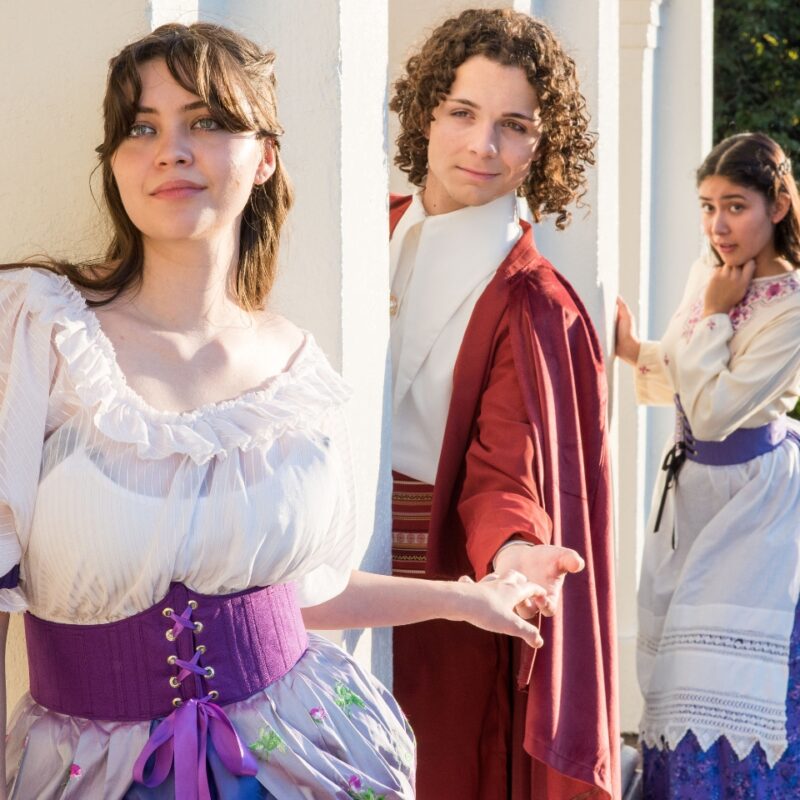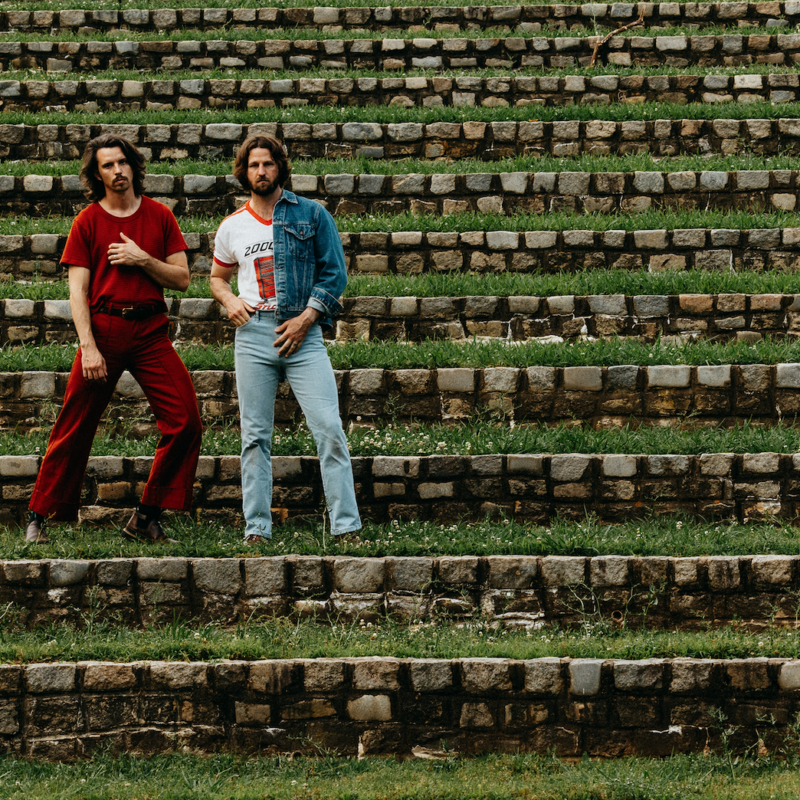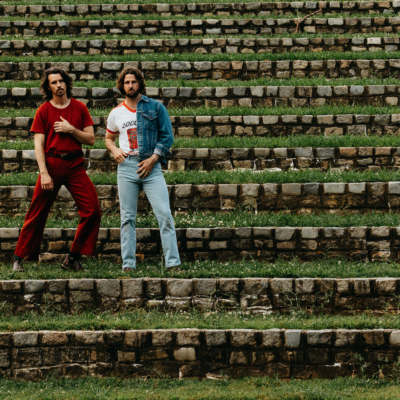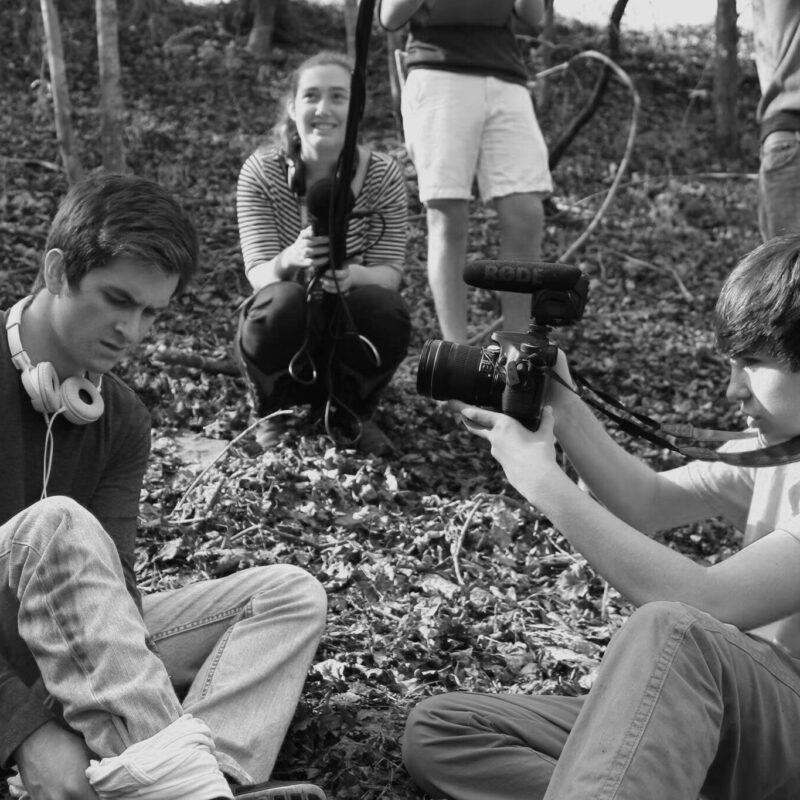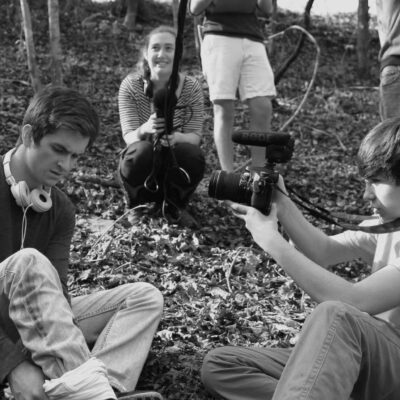Watching Steve Keene paint is a bit like watching the Ford Motor Company run in reverse. The goals are the same—a simple process and affordable products—but the assembly line is all screwy, as if Keene carelessly painted over it with images of Bob Dylan or John Coltrane or beer cans. In the Steve Keene assembly line, a single product doesn’t roll through row after row of workers; a single worker runs back and forth through row after row of products.
And, like an assembly line, Keene—whose show in Second Street Gallery will double as the former local’s open workshop until December 12—doesn’t seem concerned with anything beyond the concepts of “Start” and “Stop.” When I arrived at Second Street last Wednesday to check the progress of his show’s installation, Keene had just begun to construct wooden scaffolding to hold the paintings he brought with him—800? 900? More hundred?—from Brooklyn. A day later, and I was back to speak with Keene, but the assembly line wasn’t quite running yet; instead, he was standing in front of the large boards that surrounded half of Second Street Gallery’s main space.
“Give me a couple of minutes, and I can start painting while we talk,” he said.
Soon the machine was primed for a day’s work, dressed in dark Dickey’s pants and a brown shirt that should last him through a few months of hard labor. (Keene works through about three pairs of pants, five shirts, and two pairs of shoes each year.) He stepped up onto two small paint cans at a far corner of his blank canvas, slapped on the first dash of gray paint and announced with the urgency of a work whistle, “Get your pen out. First question.”
Keene has fielded most of them, of course. In nearly two decades of work, Keene hasn’t strayed too far in subject matter or execution: He “manufactures” paintings, compares his work to Robert Rauschenberg and his process to Dunkin’ Donuts’ “Time to Make the Doughnuts” campaign. “I’d be lying if I said that the images were not important,” he remarked. “But they’re less important.”
Raising a show like Keene’s exhibit at Second Street, on display through January 31, means either painting roughly 100 paintings a day or carting in 1,000 or so. “Whether it’s two weeks or two days, it’s always the same assault,” Keene said about installing his shows. There’s no emotional attachment, per se, to the products, but there seems to be an emotional familiarity with the process.
During a members’ preview on Thursday night, Keene expressed that his current exhibit’s prices, $10 to $15, were a bit higher than he’d prefer. Nonetheless, people left with as many as three or four pieces tucked under their arms, not to mention free cassette tapes from Keene’s days as a WTJU DJ, shows that he recorded that date back to the early ’90s. And while gallery members scarfed down baked goods, shopped and talked, the assembly line kept working on his mural, racing back and forth to add new parts.
“If there are no paintings left in the space to look at two weeks from now, at least there’s something to look at,” said Keene.
Dabbling in Clay
An exhibition from local artist and Dean Dass protegé Clay Witt is nearly as rare as Halley’s Comet, and every bit as striking in its astral majesty, its sheer natural ferocity. Deservedly, Witt’s current exhibition at Les Yeux du Monde—“The Peaceable Kingdom,” his first local show since his “Dark/Light” collaboration with Dass in December 2006—starstruck those in attendance for the exhibition of his latest works.
Witt’s 2007 piece, “The Tree of Life,” demands a firey reverence in a room of its own, but was also an ideal marker for the artist’s latest departures. In “Et in Arcadia Ego,” a circus of Japanese paper animals parades around a chemically explosive icon similar to the other monstrous infernos that appear throughout Witt’s work. And in “The Peaceable Kingdom,” a reference to the Edward Hicks paintings that inspired Witt’s latest show (and recently raised the ire of Halsey Minor), more animals in mixed-species pairs gaze curiously at a burning cage engulfed in gold leaf and rust, wild as their creator and in awe as his audience. Head to Les Yeux and join the parade.
Lights out!
James Yates couldn’t quite finish the “Angel of Light” idea he’d planned for this year’s “Let There Be Light” show at PVCC on Friday, December 12, a one-night art exhibit that pulled in around 500 people for last year’s inaugural show. The angel, according to Yates, would “appear every so often around the grounds in a puff of glitter.”
“That morphed into the idea of the puff of glitter, then wanting it to be more participatory,” said Yates during a phone interview. What Yates came up with—a highlight among the works contributed by this year’s 14 participating artists—is the glitter box, titled “If Not Now, When?” During Friday’s show, people will be invited into a box to grab two handfuls of glitter and throw them into the air, to illuminate the word…well, you can read it for yourself at the event.
The event itself remains a once-a-year happening, a cloud of sparks and shine that vanishes in a matter of hours. “The difficulty of a second night is that people are using video projectors and a lot of expensive equipment,” explained Yates.
And there’s no shortage of bright ideas, from sound sculptures by Bridge co-founder Greg Antrim Kelly to videos from C-VILLE fave Rob Tarbell, who recorded his right eye in close-up as he read calendars and to-do lists. Be sure to check the show out on December 12 from 6-9pm, and head to lettherebelightpvcc.com for more details.
